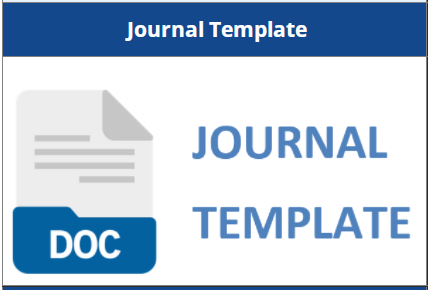ANALISIS DAMPAK PERUBAHAN PENGGUNAN LAHAN PERKOTAAN TERHADAP URBAN HEAT ISLAND DI KECAMATAN KEDATON
Abstract
The Urban Heat Island phenomenon is defined as a form of local climate change. In the formation of the Urban Heat Island phenomenon, there are several factors, namely changes in land use, vegetation density, building density, and vehicle emissions. Dense development areas that have caused changes in land use, settlements, and transportation activities have begun to accumulate in Kedaton District. Kedaton District is included in the activity center area so that changes in land use from 2017 to 2022 occur significantly, which can cause an increase in urban temperatures. This study aims to analyze the impact of changes in urban land use on Urban Heat Island in Kedaton District. The variables used are land use, surface temperature, vegetation density, building density, motor vehicle intensity, and motor vehicle emissions. The analytical methods used are LST, NDVI, NDBI, road service level analysis, vehicle emission analysis, and correlation analysis. The results of the analysis show that the impact of changes in land use will result in a 76% decrease in vegetation density in 2022, a 95% increase in building density, and a 99% increase in vehicle emissions. The impact of changes in land use has contributed to the distribution of urban heat islands in Kedaton District. To minimize the impact of changes in use on the Urban Heat Island in Kedaton District, mitigation efforts based on the resilient city concept are needed, namely the addition of private green open spaces, reflective roof paint in densely populated areas, and optimizing public transportation.
Downloads
References
[2] Ardi, I. R., Lubis, M. S., & Fitrianingsih, Y. (2010). Analisis Urban Heat Island Dalam Kaitannya Terhadap Perubahan. Jurnal Teknologi Lingkungan Dan Lahan Basah, 2(1), 1–10. http://dx.doi.org/10.26418/jtllb.v2i1.7765
[3] Asmiwyati, I. A. A. R. (2018). Urban Heat Island; Sebuah Kajian Pustaka. Program Studi Arsitektur Pertamanan Fakultas Pertanian Universitas Udayana.
[4] Corburn, J. (2009). Cities, climate change and urban heat island mitigation: Localising global environmental science. Urban Studies, 46(2), 413–427. https://doi.org/10.1177/0042098008099361
[5] Dewi Lestari, Rani Ismiarti Ergantara, dan D. P. N. (2021). PEMETAAN KONSENTRASI KARBON DIOKSIDA (CO2) DARI KENDARAAN BERMOTOR DI KECAMATAN KEDATON BANDAR LAMPUNG MENGGUNAKAN SISTEM INFORMASI GEOGRAFIS. 5, 20–24.
[6] Dirk P. P, M., Moniaga, I. L., & Lahamendu, V. (2018). Penggunaan Lahan Kawasan Perkotaan Berdasarkan Fungsi Kawasan. Spasial, 5(2), 171–178.
[7] Handayanto, R. T., Haryono, & Herlawati. (2023). Perubahan Kerapatan Vegetasi dan Penutup Lahan Terhadap Urban Heat Island (UHI) di Kota Bekasi. Journal of Students‘ Research in Computer Science, 4(1), 157–166. https://doi.org/10.31599/jsrcs.v4i1.2655
[8] Mas’at, A. (2009). Efek Pengembangan Perkotaan Terhadap Kenaikan Suhu Udara Di Wilayah DKI Jakarta. Agromet, 23(1), 52–60. https://media.neliti.com/media/publications/247220-none-073e2550.pdf
[9] Rushayati, S. B., Alikodra, H. S., Dahlan, E. N., & Purnomo, H. (2011). Pengembangan Ruang Terbuka Hijau berdasarkan Distribusi Suhu Permukaan di Kabupaten Bandung. Forum Geografi, 25(1), 17. https://doi.org/10.23917/forgeo.v25i1.5027
[10] Tursilowati, L. (2005). Pulau Panas Perkotaan Akibat Perubahan Tata Guna dan Penutup Lahan di Bandung dan Bogor. Jurnal Sains Dirgantara, 3(1), 43–64. https://jurnal.lapan.go.id/index.php/jurnal_sains/article/view/640
[11] Tursilowati, L. (2015). THE INFLUENCE OF URBAN DEVELOPMENT ON THE CHANGES OF CLIMATE PADA PERUBAHAN IKLIM DAN LINGKUNGAN DI SEMARANG THE INFLUENCE OF URBAN DEVELOPMENT ON bumi sehingga suhu atmosfer bumi semakin panas. Bertambahnya pemukiman dan gedung-. June.
[12] Viera, A. J., & Garrett, J. M. (2005). Anthony J. Viera, MD; Joanne M. Garrett, PhD (2005). Understanding interobserver agreement: the kappa statistic. Fam Med 2005;37(5):360-63. Family Medicine, 37(5), 360–363.












